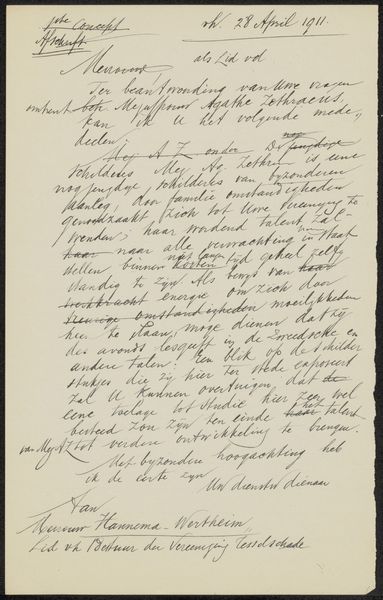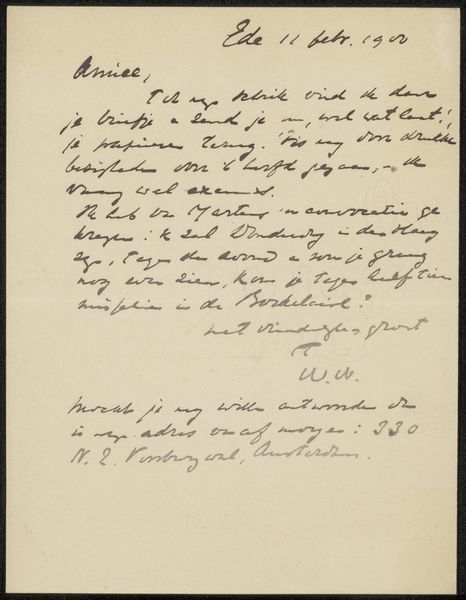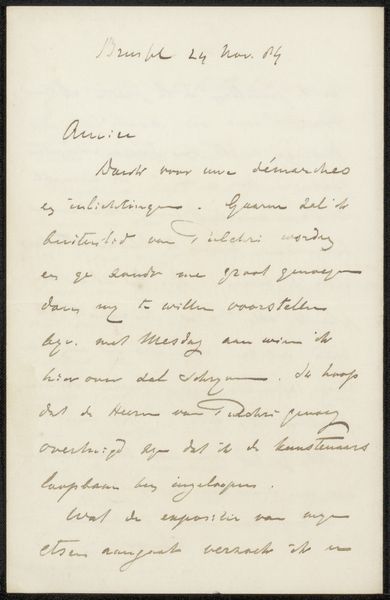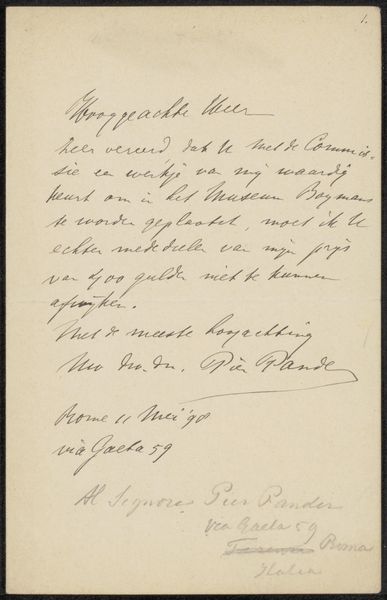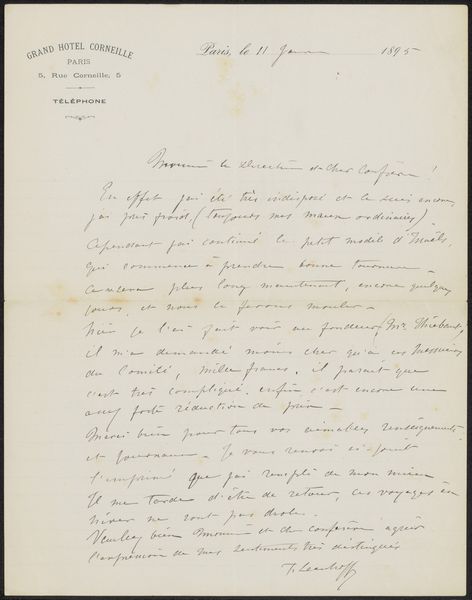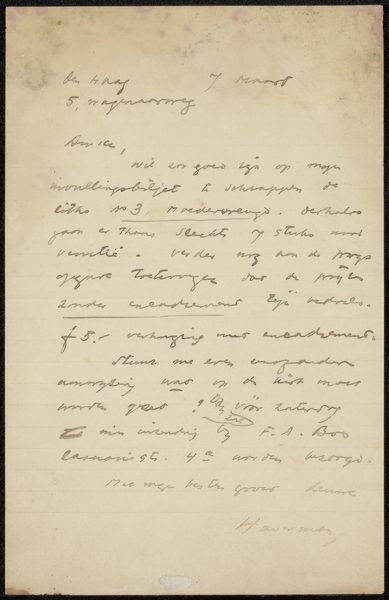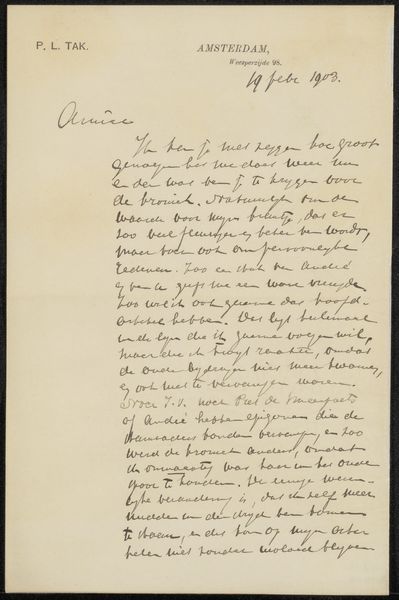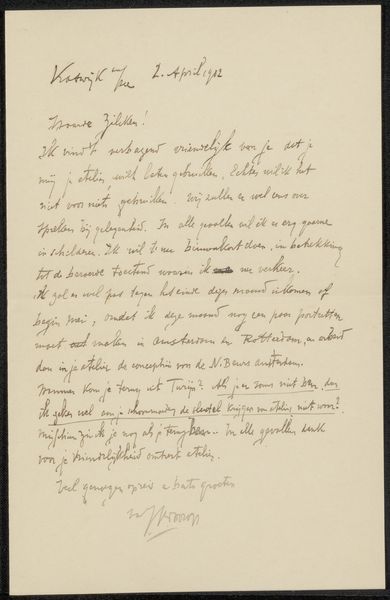
drawing, paper, ink, pen
drawing
hand drawn type
paper
ink
pen-ink sketch
pen work
pen
Copyright: Rijks Museum: Open Domain
Editor: Here we have "Brief aan Philip Zilcken," potentially from 1913, by Charles van Wijk. It's ink on paper, a handwritten letter, almost like a pen sketch in its fluidity. The mood feels intimate and personal, don't you think? What strikes you about this piece? Curator: What I see is a trace of a specific historical moment. Think about the act of writing a letter then. It signifies a different kind of relationship to time, communication, and even intimacy than we experience today. We see handwriting itself becoming a form of visual expression. Editor: Right, it's not just the content of the letter, but the visuality of it as well. How does the historical context inform your understanding? Curator: The early 20th century was a period of intense social and political upheaval, with anxieties surrounding industrialization and shifting class structures. Letters like this offer glimpses into personal networks and intellectual exchanges. The handwriting itself may reflect the writer’s identity and social positioning. Consider what it meant to communicate in this way versus a telegram or face to face, and how it reinforces privilege for those who were literate. What is he even saying in the letter? Editor: According to the transcription, he's thanking someone, discussing someone's candidacy and mentioning Amsterdam. He also talks about some membership. Curator: Exactly. While seemingly mundane, these details give clues. This could represent how artists and intellectuals navigated their professional and personal lives. Perhaps these 'pogingste venturendy' hinted at anxieties about an unknown future for the recipient of this brief. Does that add a different feeling to this artifact? Editor: It definitely adds depth to what initially seemed like a simple note. It really highlights how the personal and the political are intertwined. Curator: Precisely. By examining these connections, we can gain a richer understanding of the complexities of the past and their relevance to the present. I now see something I did not see before; thank you.
Comments
No comments
Be the first to comment and join the conversation on the ultimate creative platform.
